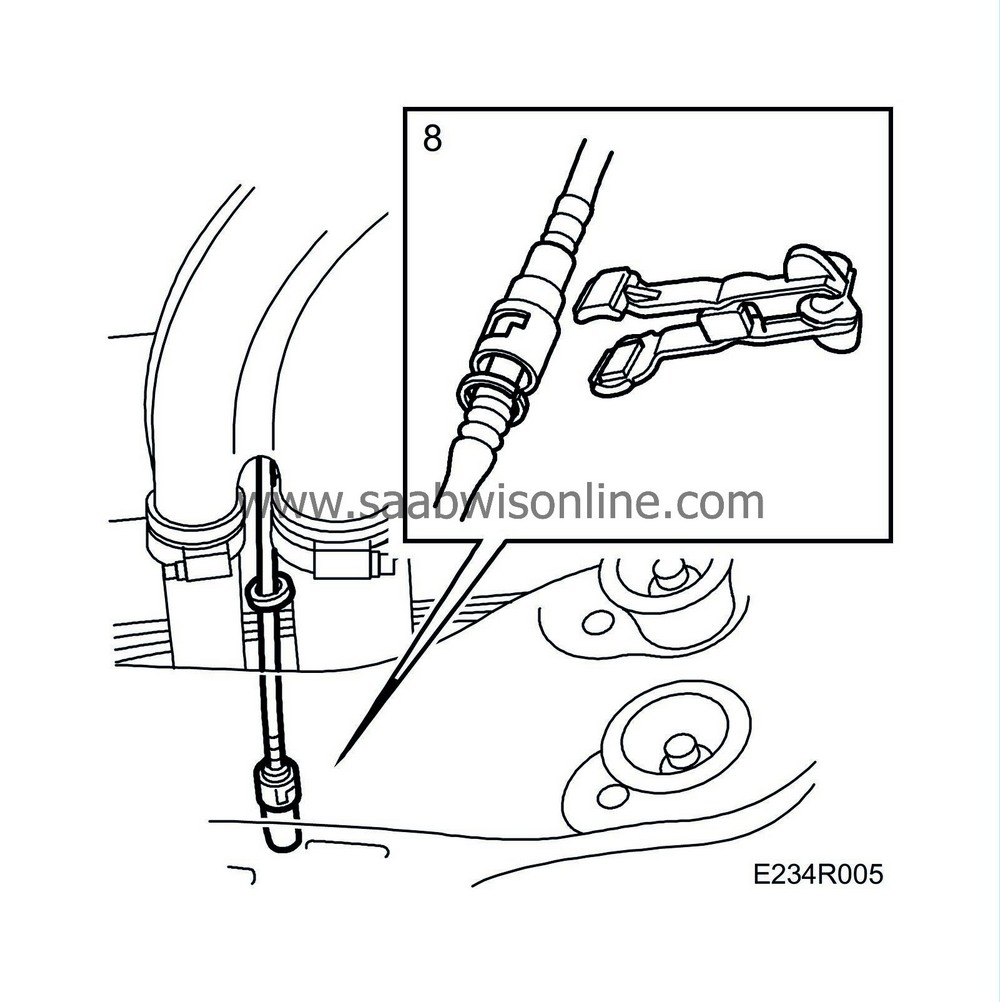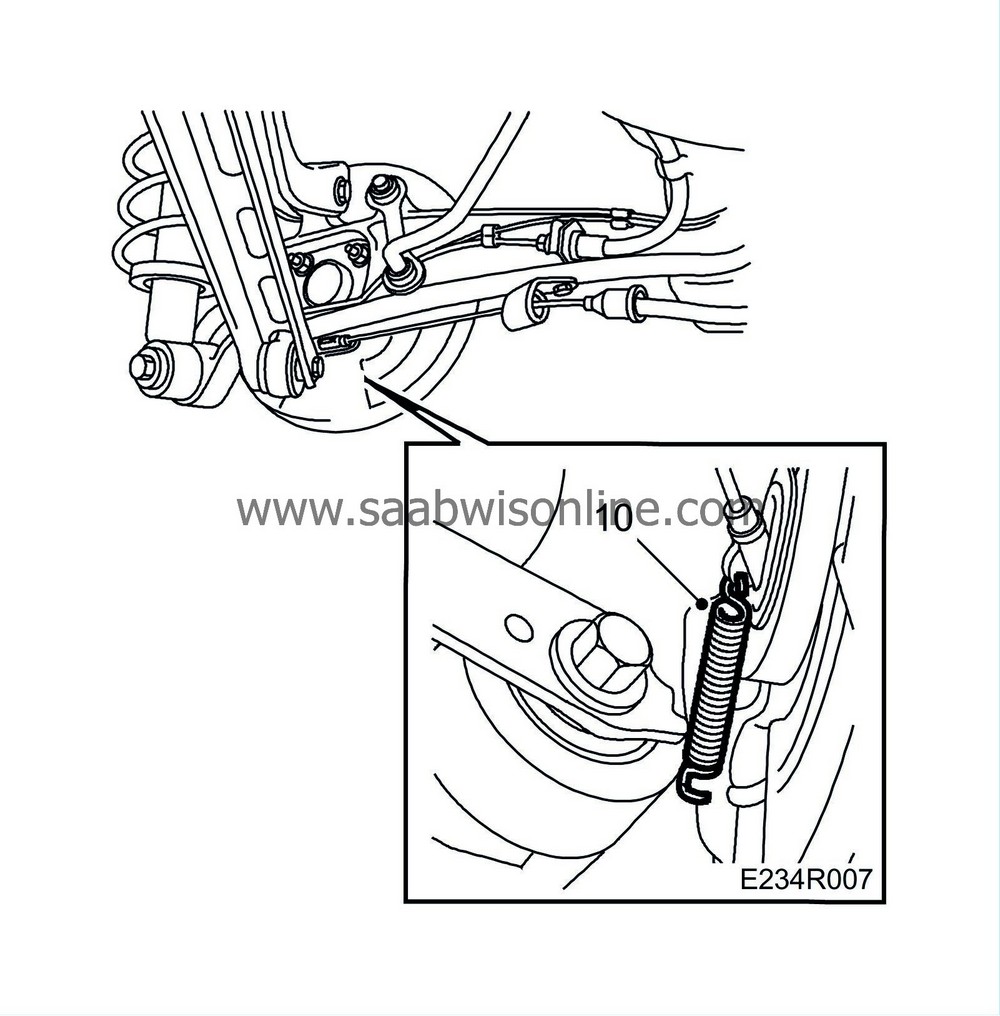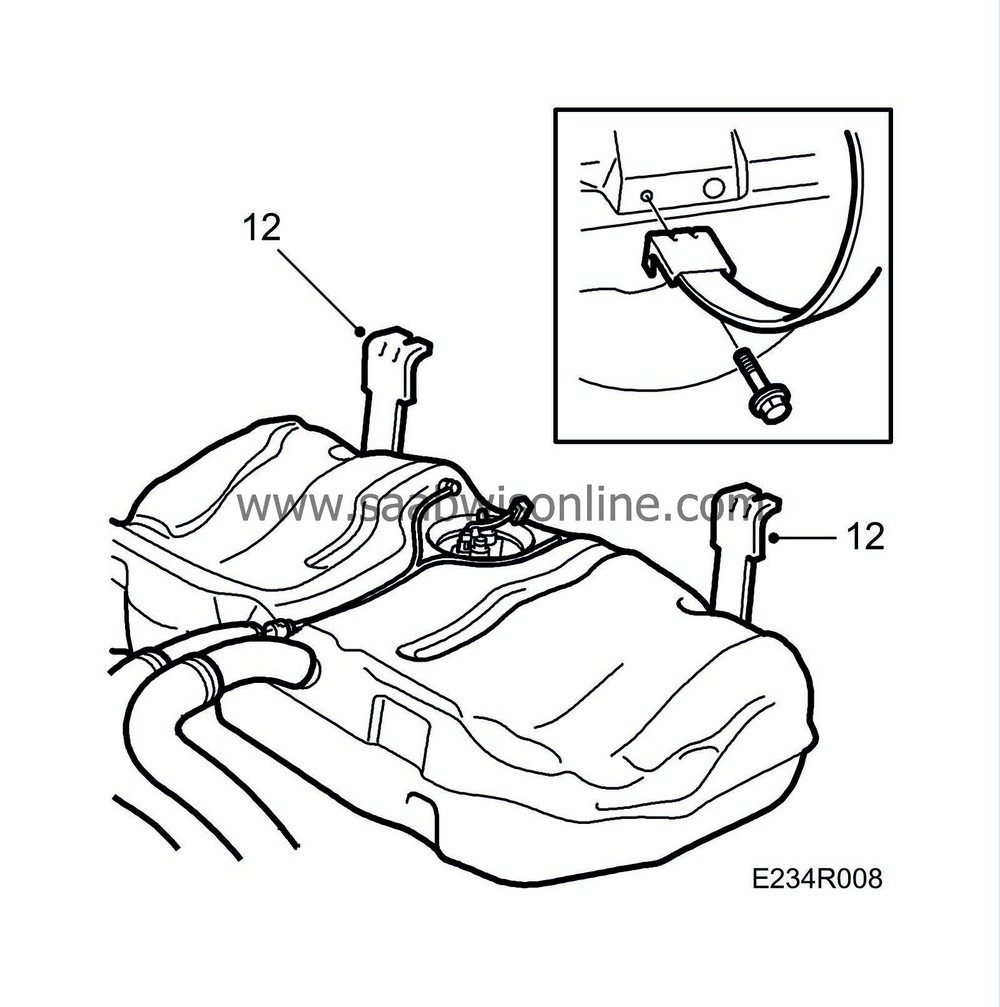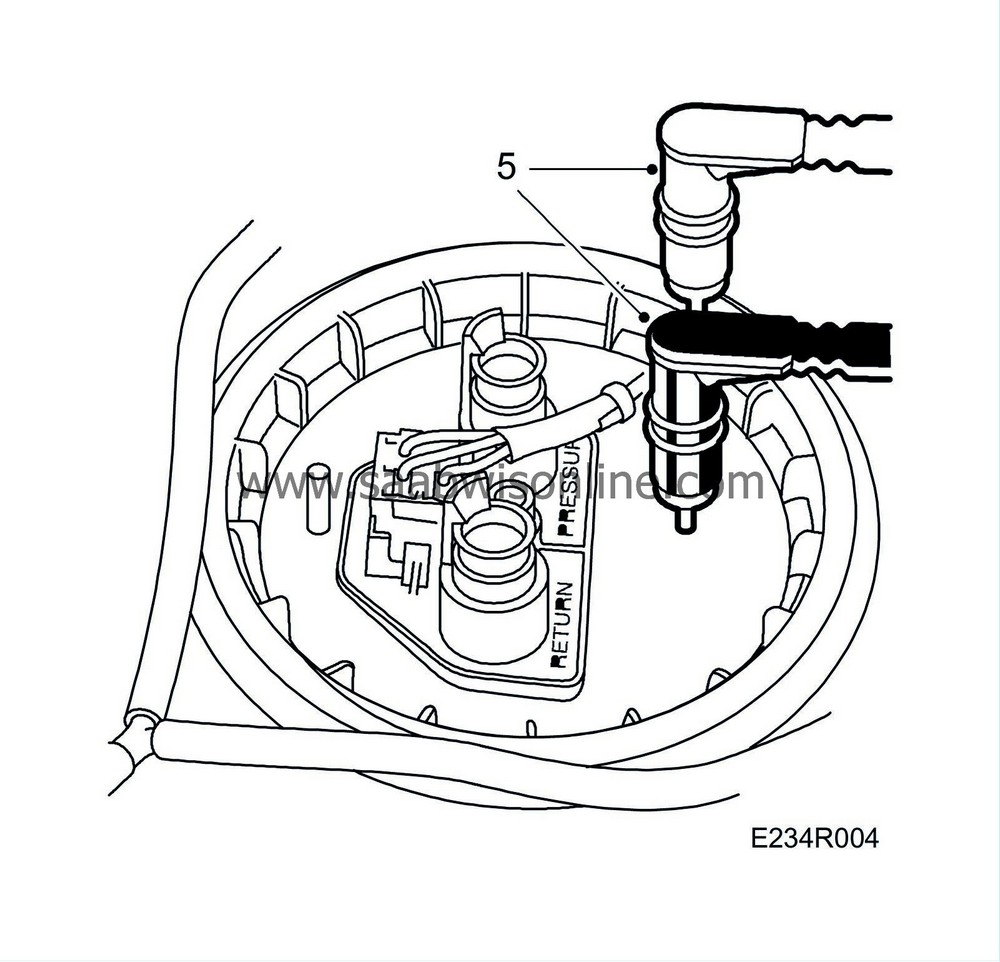PRE-RELEASE
Fuel tank
| Fuel tank |
|
||||||||||||||||||||||
| To remove |

| 1. |
Raise the rear seat cushion and fold back the carpet.
|
|
| 2. |
Remove the fuel pump cover.
|
|
| 3. |
Unplug the upper connector.
|
||||||||||
| 4. |
Empty the fuel tank. See
Emptying the fuel tank
.
|
|
| 6. |
Raise the car.
|
|
| 7. |
Remove the rear exhaust pipe section.
|
|
| 8. |
Unplug the purge pipe with
83 95 261 Tools, Fuel line
.

|
|
| 9. |
Detach the hoses to the filler pipe by undoing the filler pipe plastic screw.

|
|
| 10. |
Detach both handbrake cables at the handbrake lever.

|
|
| 11. |
Place a pillar jack under the tank.
|
|
| 12. |
Undo the front screws on the straps securing the tank and lower it.

|
|
| To fit |
| Note | ||
|
Spray the connectors with Kontakt 61, part no. 30 04 520, before connecting them. |
| 1. |
Carefully jack up the tank.
|
|
| 2. |
Fit the handbrake cables.
|
|
| 3. |
Fit the straps.
|
|
| 4. |
Fit the purge pipe.
|
|
| 5. |
Fit the filler pipe.
Tightening torques: Plastic screw 1.5 Nm (1.1 lbf ft) Hose clips 4 Nm (2.9 lbf ft)
|
|||||||||||||
| 6. |
Lower the car to the floor.
|
|
| 7. |
Plug in the connector and connect the fuel lines. Apply acid-free vaseline on the O-rings.
|
||||||||||

 Warning
Warning


